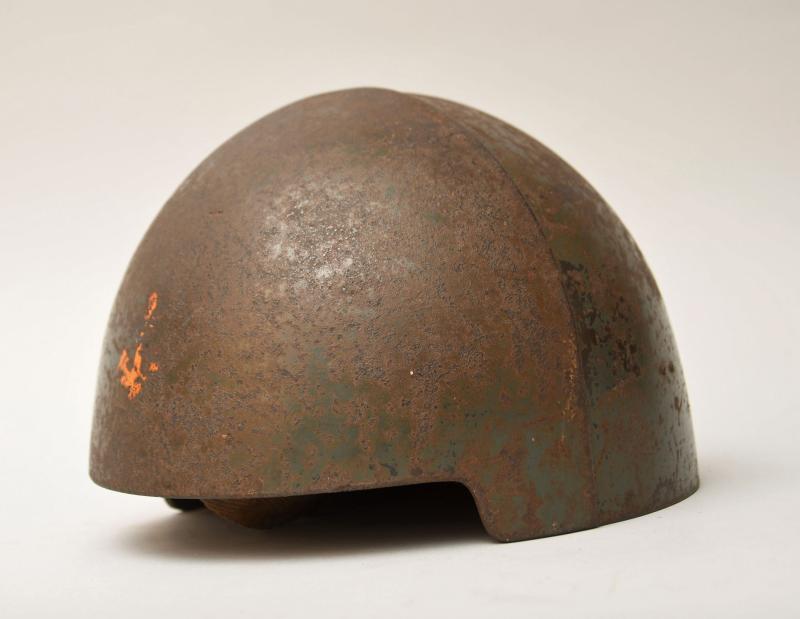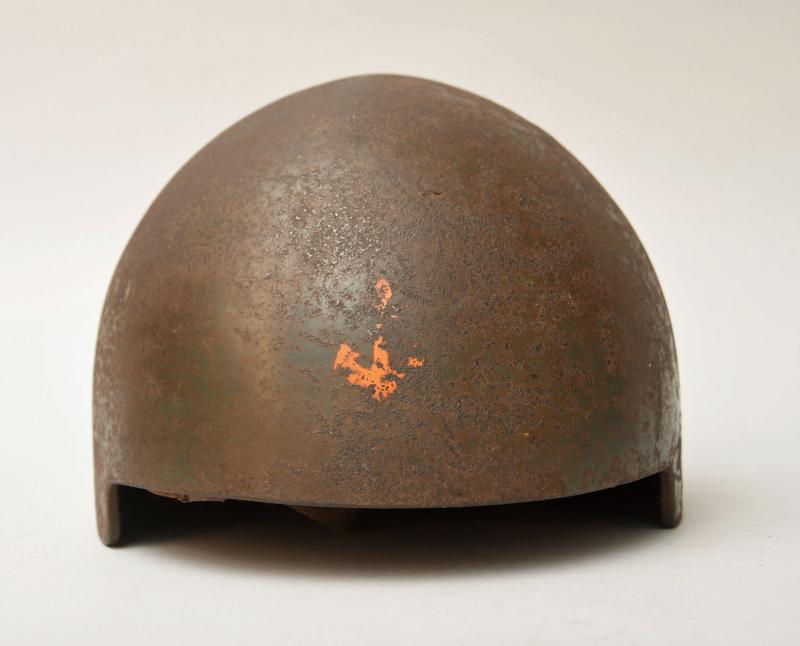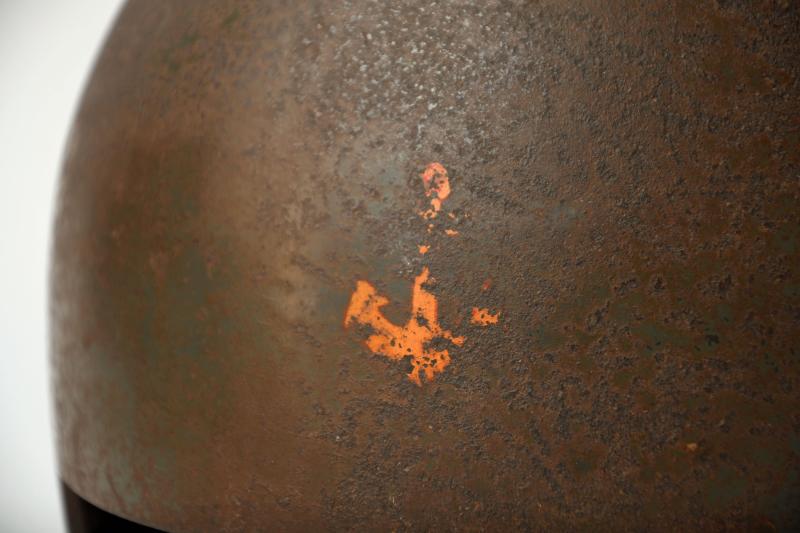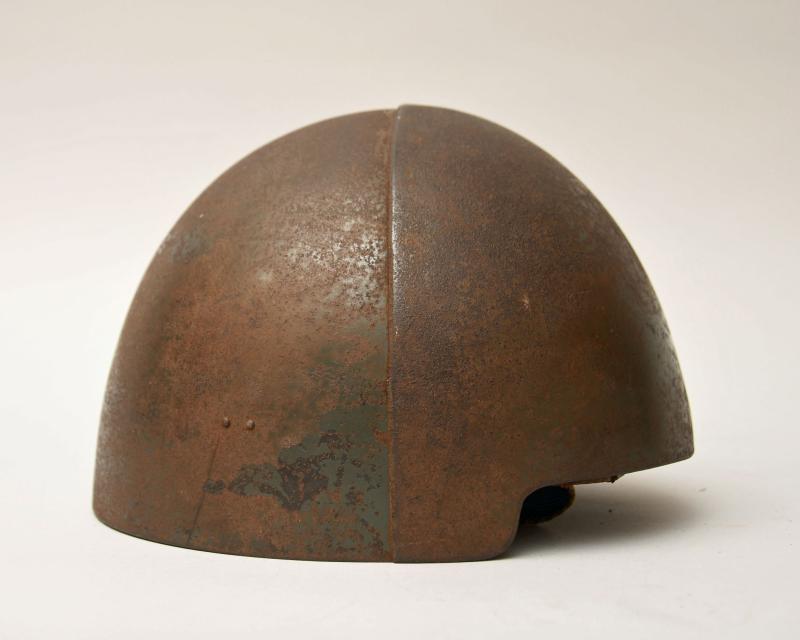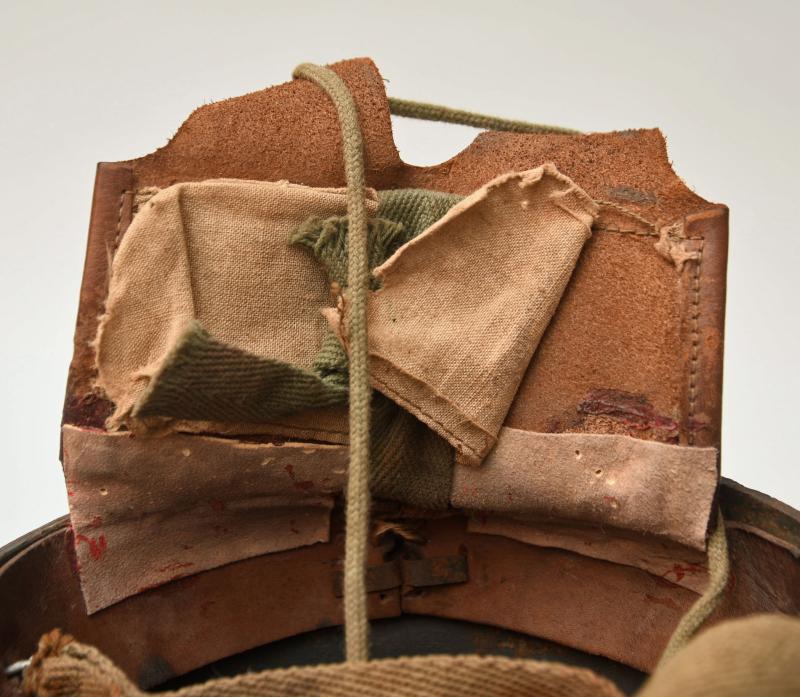WWII JAPANESE NAVY SHINYO OR SEA QUAKE SUCIDE BOAT HELMET
Undoubtedly, one of the very rarest steel helmets of any modern period. The Japanese were to develop various defense and attack strategies that involved the sacrifice and effective suicide of those undertaking the mission. The best known to all were the kamikaze aircraft pilots who caused havoc and terror amongst the Allied navies. But another far less known tactic saw considerable development and planning. From the end of 1943, units were formed, and fast motor boats were developed, that were to be launched head on into Allied shipping, piloted by a single man. Considerable effort was directed towards protecting the boat pilot, whose mission was to get to the objective at all costs; thus sets of body armour and these heavy helmets were put into production. The Navy had the lion's share of these boats, however the Army also operated some. Boats were based on various islands and Japanese held territories, but the largest body were held back in defence of the homeland. When Allied Forces finally accepted the Japanese surrender, many of these boats were discovered. This was the likely time that the relatively small amount of these helmets were picked up and brought home, mostly in the hands of US servicemen.
The helmets themselves were produced in very limited numbers and are beautifully made. The manufacturing quality clearly shows signs of the renowned Japanese armour-making skill with a single, thick, heavy shell that had an additional very well-fitted secondary steel plate, almost invisibly riveted to the shell's front. Finished in a sea grey-blue paint applied over a typically well-finished chemically blackened and hardened surface and adorned to the front with a yellow stencilled anchor that was bordered by hand in a fine red line work. The chinstrap and liner elements showed heavier construction than those found in typical general issue Type 90 helmets. This example, like a few others noted, has a number painted to the rear that would indicate it had been issued to an individual or a vessel. This type of helmet is rarely seen on the market and over the years has proved near impossible to find. A truly unique helmet pertaining to a fascinating era of modern military history.
This example having slight surface rust bleed through the chemical finish , the condition can be seen in our web site images, some losses to the painted yellow anchor, the lining has all of its 3 leather pads and small leather rot hole or a split to the leather in each of the 3 pads , two have their inner canvas pouch for the inner pad , one has half of the inner canvas pouch missing, we believe through rodent attack ,
the long section of webbing tape that acts as the chinstrap has been cut short all the rest of the webbing cradle that forms the strapping system is present. More extensive, extra images can be seen on our new Premium website, type in regimentalsmilitaria.co.uk in to your web browser.
Code: 87248
5995.00 GBP

